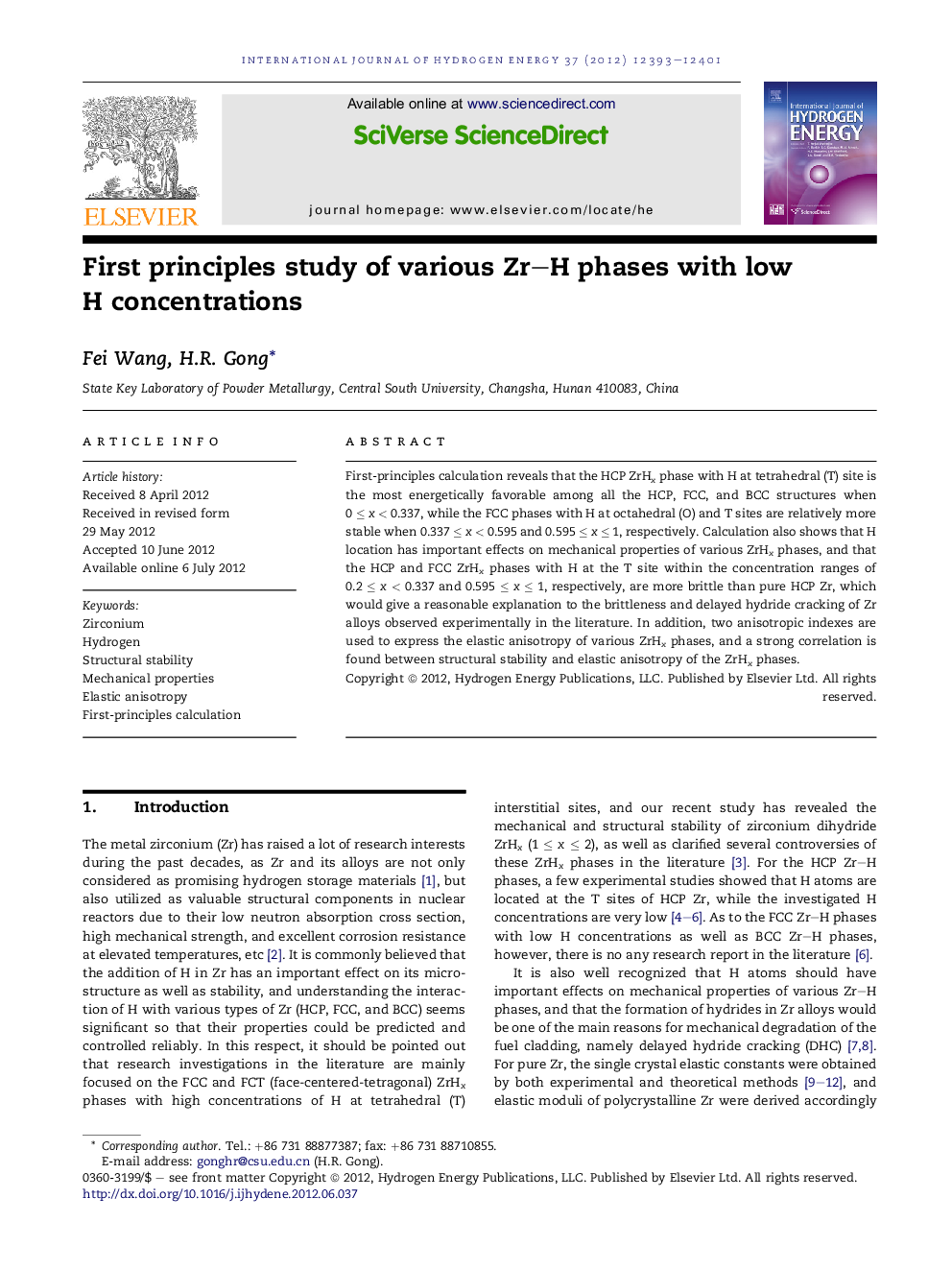| Article ID | Journal | Published Year | Pages | File Type |
|---|---|---|---|---|
| 1271075 | International Journal of Hydrogen Energy | 2012 | 9 Pages |
First-principles calculation reveals that the HCP ZrHx phase with H at tetrahedral (T) site is the most energetically favorable among all the HCP, FCC, and BCC structures when 0 ≤ x < 0.337, while the FCC phases with H at octahedral (O) and T sites are relatively more stable when 0.337 ≤ x < 0.595 and 0.595 ≤ x ≤ 1, respectively. Calculation also shows that H location has important effects on mechanical properties of various ZrHx phases, and that the HCP and FCC ZrHx phases with H at the T site within the concentration ranges of 0.2 ≤ x < 0.337 and 0.595 ≤ x ≤ 1, respectively, are more brittle than pure HCP Zr, which would give a reasonable explanation to the brittleness and delayed hydride cracking of Zr alloys observed experimentally in the literature. In addition, two anisotropic indexes are used to express the elastic anisotropy of various ZrHx phases, and a strong correlation is found between structural stability and elastic anisotropy of the ZrHx phases.
► HCP(T), FCC(O), FCC(T) ZrHx are more stable as 0 ≤ x < 0.337, 0.337 ≤ x < 0.595, 0.595 ≤ x ≤ 1. ► Some HCP and FCC ZrHx phases are more brittle than pure HCP Zr. ► A strong correlation is found between structural stability and elastic anisotropy. ► H concentration and location play important roles in mechanical properties. ► Various properties of ZrHx are discussed in terms of electronic structures.
